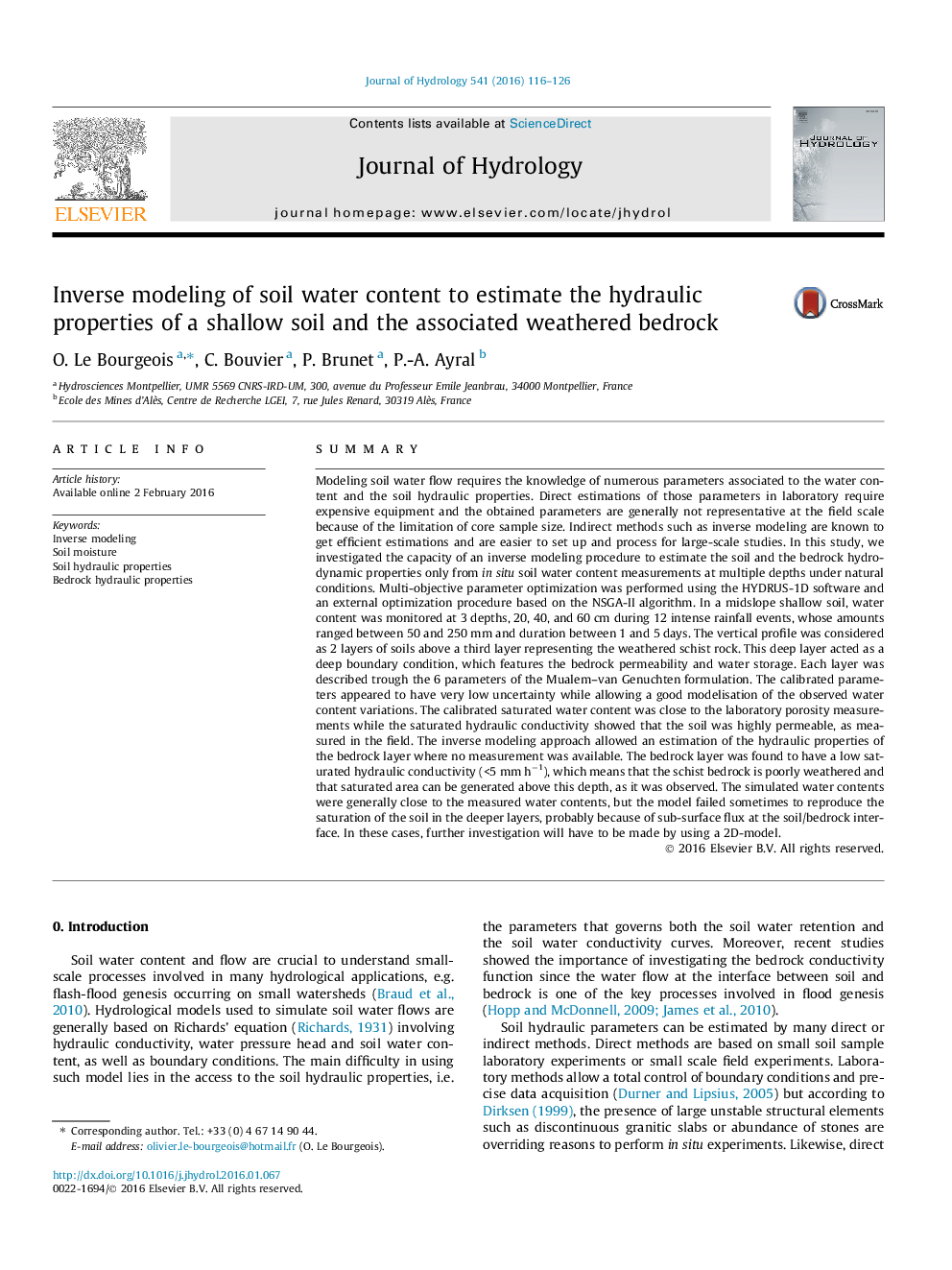| کد مقاله | کد نشریه | سال انتشار | مقاله انگلیسی | نسخه تمام متن |
|---|---|---|---|---|
| 6409362 | 1332869 | 2016 | 11 صفحه PDF | دانلود رایگان |
- Soil hydraulic properties estimated by inverse modeling.
- Inverse modeling is reliable with only data on rainfall and field soil moisture.
- Estimated parameters appear to be robust and efficient.
- Inverse modeling allows to access to the bedrock hydraulic properties.
SummaryModeling soil water flow requires the knowledge of numerous parameters associated to the water content and the soil hydraulic properties. Direct estimations of those parameters in laboratory require expensive equipment and the obtained parameters are generally not representative at the field scale because of the limitation of core sample size. Indirect methods such as inverse modeling are known to get efficient estimations and are easier to set up and process for large-scale studies. In this study, we investigated the capacity of an inverse modeling procedure to estimate the soil and the bedrock hydrodynamic properties only from in situ soil water content measurements at multiple depths under natural conditions. Multi-objective parameter optimization was performed using the HYDRUS-1D software and an external optimization procedure based on the NSGA-II algorithm. In a midslope shallow soil, water content was monitored at 3 depths, 20, 40, and 60 cm during 12 intense rainfall events, whose amounts ranged between 50 and 250 mm and duration between 1 and 5 days. The vertical profile was considered as 2 layers of soils above a third layer representing the weathered schist rock. This deep layer acted as a deep boundary condition, which features the bedrock permeability and water storage. Each layer was described trough the 6 parameters of the Mualem-van Genuchten formulation. The calibrated parameters appeared to have very low uncertainty while allowing a good modelisation of the observed water content variations. The calibrated saturated water content was close to the laboratory porosity measurements while the saturated hydraulic conductivity showed that the soil was highly permeable, as measured in the field. The inverse modeling approach allowed an estimation of the hydraulic properties of the bedrock layer where no measurement was available. The bedrock layer was found to have a low saturated hydraulic conductivity (<5 mm hâ1), which means that the schist bedrock is poorly weathered and that saturated area can be generated above this depth, as it was observed. The simulated water contents were generally close to the measured water contents, but the model failed sometimes to reproduce the saturation of the soil in the deeper layers, probably because of sub-surface flux at the soil/bedrock interface. In these cases, further investigation will have to be made by using a 2D-model.
Journal: Journal of Hydrology - Volume 541, Part A, October 2016, Pages 116-126
